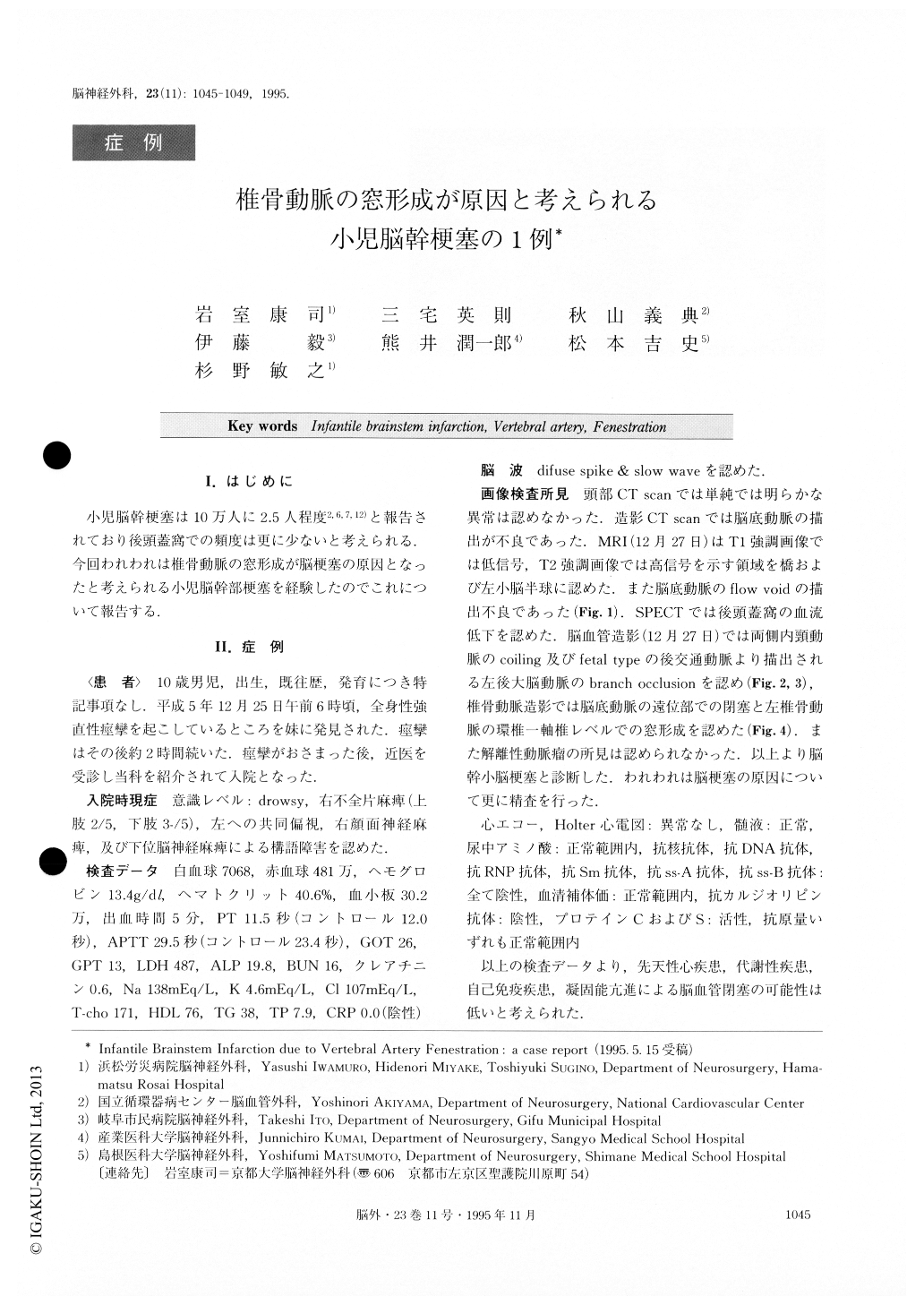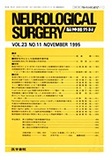Japanese
English
- 有料閲覧
- Abstract 文献概要
- 1ページ目 Look Inside
I.はじめに
小児脳幹梗塞は10万人に2.5人程度2,6,7,12)と報告されており後頭蓋窩での頻度は更に少ないと考えられる.今回われわれは椎骨動脈の窓形成が脳梗塞の原因となったと考えられる小児脳幹部梗塞を経験したのでこれについて報告する.
The patient was a 10-year-old-boy. He had a sudden onset of generalized tonic-clonic convulsion. On admis-sion, he presented with mild disturbance of conscious-ness and right hemiparesis. The electroencephalogram showed diffuse spike and slow wave complex. Three days later, magnetic resonance imaging (MRI) showed high signal intensity areas in the left cerebellar hemi-sphere and pons. On cerebral angiograms, coiling of the bilateral carotid arteries, occlusion of the basilar artery at the distal site, and fenestration of the left vertebral artery at the atlanto-axis level were shown. According to these findings, the patient was diagnosed with brain-stem and cerebellar infarction. On the follow-up angio-grams, recanalization of the basilar artery on the right vertebral angiogram, occlusion of the left vertebral artery at the distal site of the posterior inferior cerebel-lar artery origin, and occlusion of one of the duplicated vertebral arteries were recognized. Fenestration of the vertebral artery is presented in about 1-2% at angiography and autopsy and the clinical significance is controversial.
In this case, the fenestration may have played a role as an embolic source because there was no probable cause of the cerebral infarction, and the vascular occlu-sion and recanalization occurred near the distal site of the fenestration. These findings suggest the clinical sig-nificance of vertebral artery fenestration as an embolic source.

Copyright © 1995, Igaku-Shoin Ltd. All rights reserved.


